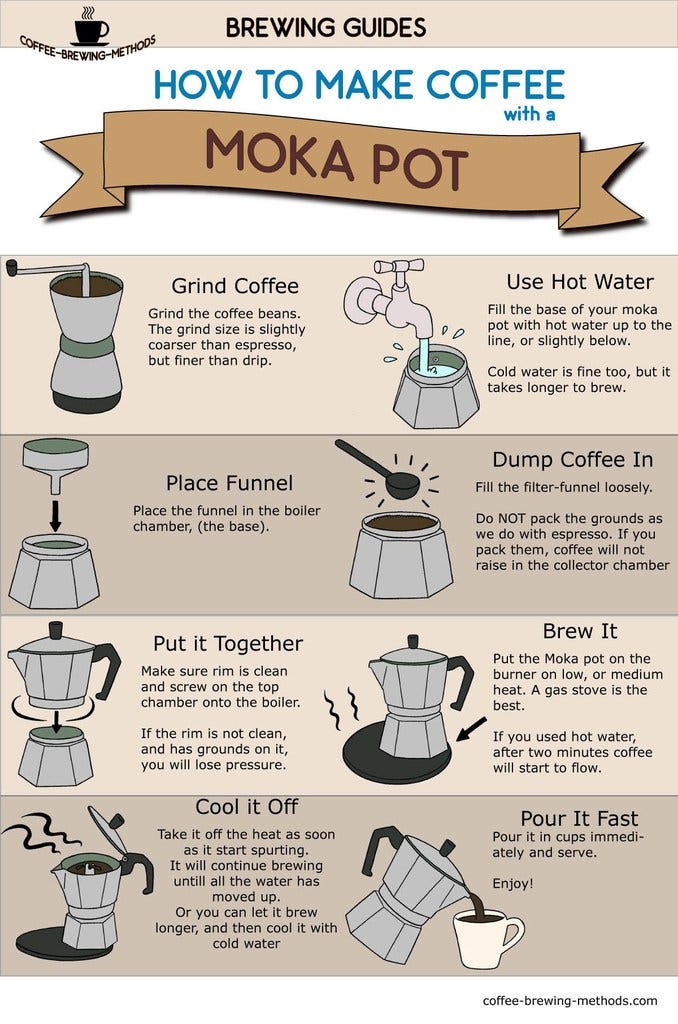Grasping Coffee Brewing Methods: Necessary Techniques for every single Coffee Lover
Grasping Coffee Brewing Methods: Necessary Techniques for every single Coffee Lover
Blog Article
The Science Behind Coffee Brewing: How Temperature Level and Time Affect Your Beverage
Understanding the scientific research behind coffee developing reveals that temperature and time are not simple variables yet critical elements that dictate the beverage's flavor profile and total high quality. The optimum developing temperature level normally falls between 195 ° F and 205 ° F, while the duration of removal differs dramatically throughout various techniques. This interaction of variables can cause a mug that is either disappointing or wonderful. As we check out the subtleties of these aspects, the question develops: how can one effectively equilibrium temperature level and time to achieve that excellent brew?
The Chemistry of Coffee Removal
The chemistry of coffee removal explores the elaborate procedures that transform raw coffee beans right into the fragrant beverage taken pleasure in worldwide. This makeover mostly entails the solubility of different substances present in the beans, which are influenced by factors such as work dimension, water high quality, and the developing technique used.
During the brewing process, warm water works as a solvent, removing soluble substances, consisting of caffeine, acids, sugars, and lipids, from the coffee premises. Each compound adds to the taste account, aroma, and body of the last drink. Acids are accountable for appetizing and brilliant notes, while oils add to an abundant mouthfeel.
The initial phases of developing remove acids and sugars, leading to a pleasurable level of acidity, while extended removal can lead to resentment due to over-extraction of undesirable compounds. Comprehending these chemical interactions is essential for maximizing developing techniques, as the balance between extraction time and water temperature can dramatically influence the total top quality of the coffee.
Perfect Brewing Temperatures
Discovering the best developing temperature level is important for opening the complete capacity of coffee tastes and fragrances - coffee brewing methods. Study suggests that the optimum variety for brewing coffee exists in between 195 ° F to 205 ° F(90 ° C to 96 ° C) Within this array, the extraction procedure effectively dissolves the desirable soluble substances in coffee beans, bring about a tasty and well balanced mug
Developing at lower temperature levels, such as below 195 ° F(90 ° C ), may lead to under-extraction, yielding an acidic and weak mixture with soft tastes. Conversely, brewing at temperatures surpassing 205 ° F(96 ° C) can result in over-extraction, creating a bitter and severe preference due to the extreme dissolution of unfavorable substances, such as tannins.
Furthermore, the ideal developing temperature level can vary relying on the coffee bean type and roast level. Lighter roasts frequently profit from slightly higher temperatures to improve their intricate taste profiles, while darker roasts might be much better fit to lower temperatures to alleviate bitterness.
Inevitably, preserving accuracy in developing temperatures is critical for attaining a harmonious equilibrium of tastes, making sure that every cup of coffee delivers an enjoyable sensory experience.
Impact of Brewing Time
Brewing time plays a pivotal duty in identifying the flavor account and general high quality of coffee. Shorter developing times can result in under-extraction, leading to a sour or weak flavor, as not adequate soluble compounds are liquified.
Optimum developing time differs depending upon the technique used and the grind dimension of the coffee. For example, a French press generally requires about 4 linked here mins, while espresso removal is normally completed within 25 to 30 secs. It is vital to calibrate developing time in conjunction with various other variables, such as water temperature level and coffee-to-water proportion, to attain the desired flavor profile.
Understanding the effect of brewing time makes it possible for coffee enthusiasts to improve their developing strategies, inevitably improving the sensory experience of their cup (coffee brewing methods). With careful attention to this variable, one can open the complete capacity of the coffee, disclosing its unique attributes and subtleties
Brewing Approaches and Their Impacts

As an example, techniques like French press and chilly brew allow for a much longer steeping time, causing a fuller body and durable flavor because of raised removal of oils and soluble solids. Alternatively, espresso brewing uses high stress and a much shorter extraction time, creating a concentrated shot that highlights intense flavors and a rich crema.
Pour-over methods, such as Chemex or V60, offer an even more regulated removal process, permitting the maker to adjust flow price and water circulation, which can enhance illumination and clearness. Meanwhile, percolation techniques cycle water through the coffee grounds several times, leading to a stronger, commonly bitter taste.
Lastly, making use of paper filters versus steel filters can additionally affect the final taste; paper filters typically produce a cleaner mug by capturing oils and great fragments, while steel filters enable more oils to pass through, adding to a fuller mouthfeel - coffee brewing methods. Comprehending these nuances can boost the coffee experience considerably
Tips for Improving Your Mixture
A well-executed mixture can transform also the most basic coffee right into an impressive experience. To achieve this, attention to information is important. Start with top quality, newly roasted beans, as their taste account reduces over time. Grind the beans just before making to maximize quality, making sure the work size matches your developing method-- coarser for click resources French press and finer for espresso.
Water high quality plays an important role; usage filtered water devoid of contaminations. The suitable brewing temperature varies between 195 ° F and 205 ° F(90 ° C to 96 ° C ) Too warm can scorch the coffee, while too cool may under-extract flavors.
Timing is just as crucial. For immersion methods, steeping for three to 5 mins is ideal, whereas drip approaches normally take Bonuses around 5 minutes. Try out mixture times to locate your preferred strength.

Verdict
In summary, the complex connection between temperature and time is paramount in the coffee brewing procedure. Comprehending these scientific principles encourages people to fine-tune their brewing methods, inevitably leading to a much more well balanced and enjoyable coffee experience.
Understanding the scientific research behind coffee brewing discloses that temperature level and time are not simple variables however critical elements that dictate the beverage's taste profile and general quality. Recognizing these chemical communications is crucial for optimizing brewing techniques, as the equilibrium between removal time and water temperature level can substantially influence the overall quality of the coffee.Developing time plays an essential function in establishing the flavor profile and overall top quality of coffee. By concentrating on these aspects-- bean top quality, grind dimension, water temperature, soaking time, and proportion-- you can boost your coffee developing procedure, resulting in a constantly remarkable cup.
In recap, the elaborate relationship between temperature level and time is vital in the coffee brewing process.
Report this page